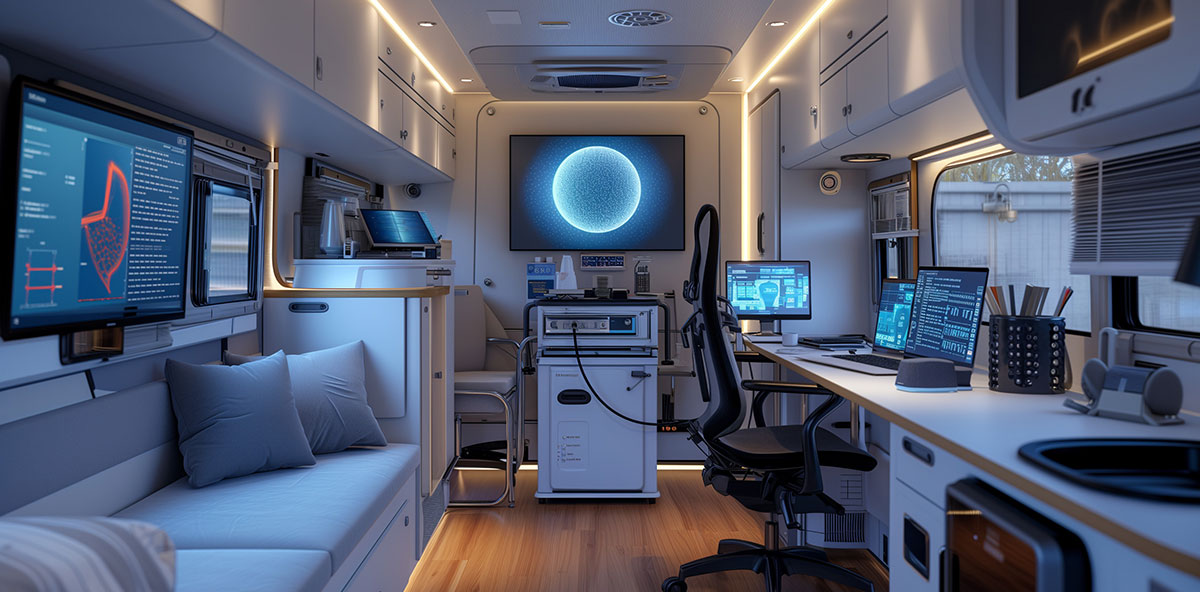As the CEO of QuickMed, I have long recognized the critical gaps in healthcare access, particularly in rural and underserved communities. One of the most effective solutions we’ve implemented to bridge these gaps is the use of mobile health clinics. These clinics on wheels have proven to be invaluable in reaching out to areas where traditional healthcare facilities are either too far away or too difficult to access. In this blog, I want to share how mobile health clinics have transformed the delivery of healthcare services and how they can be a model for increasing healthcare accessibility everywhere.
Breaking Down Barriers to Access
Mobile health clinics are designed to travel directly to the communities that need them most, eliminating several barriers to healthcare access:
Geographic Barriers
In many rural areas, the nearest healthcare facility can be hours away. Mobile clinics bring essential health services directly to these communities, saving residents time and travel expenses. This is particularly important for those who cannot afford the cost of transportation or who are unable to travel due to health conditions.
Economic Barriers
Many residents in underserved areas are uninsured or underinsured. Mobile clinics often provide services at reduced costs or with flexible payment structures, and they are sometimes funded by grants or community donations, which helps alleviate the financial burden on patients.
Educational Barriers
A lack of health literacy can be a significant barrier to accessing care. Mobile health clinics often come staffed with healthcare providers who do more than just treat; they educate. By providing on-site health education, these clinics help patients understand their health conditions and the importance of ongoing healthcare management.
Advantages of Mobile Health Clinics
Mobile health clinics offer several advantages that not only improve health outcomes but also enhance the patient care experience:
Immediate Care Provision
These clinics are equipped to provide a range of services, from basic screenings and vaccinations to more complex treatments such as diabetes management and prenatal care. The immediate provision of these services can prevent the progression of diseases and reduce the need for emergency care.
Personalized Patient Interaction
In my experience at QuickMed, the smaller scale of mobile clinics often allows for more personalized interaction between healthcare providers and patients. This can lead to better patient trust and more tailored healthcare solutions.
Flexibility and Responsiveness
Mobile clinics can be quickly redirected to serve in emergency situations or in response to sudden outbreaks of illnesses. This flexibility makes them an invaluable resource in public health responses.
Challenges and Solutions
While mobile health clinics are a fantastic resource, they come with their own set of challenges. Here are some of the common issues and how we address them:
Operational Costs
Running mobile clinics can be expensive, considering the costs of maintenance, fuel, and staffing. To manage these costs, we seek partnerships with local businesses and nonprofits, apply for health service grants, and use volunteer staff whenever possible.
Weather Dependency
Mobile health operations can be affected by extreme weather conditions, which can disrupt service delivery. To mitigate this, we closely monitor weather forecasts and adjust schedules as needed. We also equip the clinics to handle mild weather conditions so that services can continue uninterrupted as much as possible.
Regulatory Challenges
Navigating the regulatory environment can be complex, especially when crossing jurisdictional boundaries. We ensure compliance by staying well-informed about the healthcare regulations in all areas we serve and adapting our operations as necessary.
Looking Ahead
Looking to the future, I see mobile health clinics playing an even more crucial role in the healthcare landscape. With advancements in technology, these clinics could be equipped with telehealth capabilities, allowing for real-time consultation with specialists and expanding the range of services they can offer.
Furthermore, as awareness of their benefits grows, I hope to see more healthcare providers and organizations adopt this model, especially in regions around the world where healthcare disparities are most pronounced.
Conclusion
Mobile health clinics are more than just a means to deliver healthcare—they are a symbol of innovation and commitment in the medical field to reach those who might otherwise be left behind. At QuickMed, we are proud to be at the forefront of this initiative, pushing the boundaries of what is possible in healthcare delivery and making a tangible difference in the lives of many. As we continue to expand and refine this service, the potential to transform community health for the better is truly limitless.


